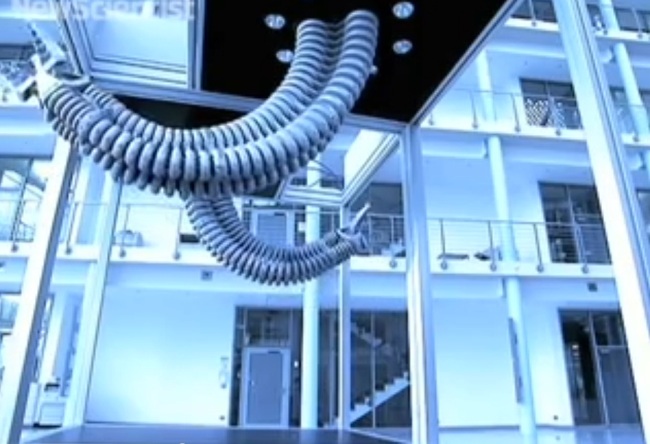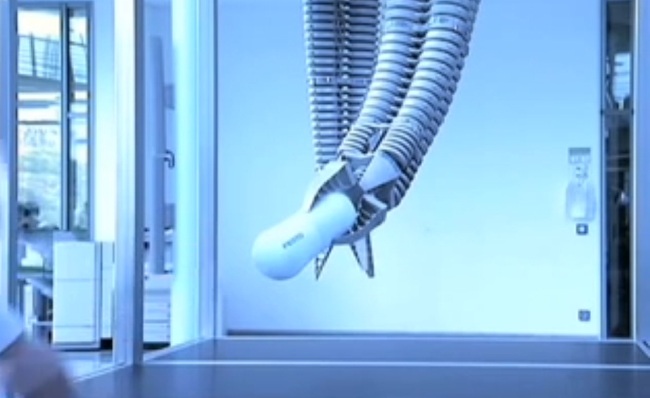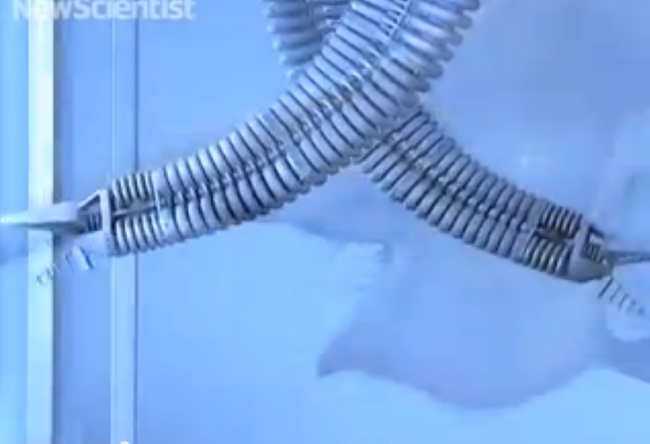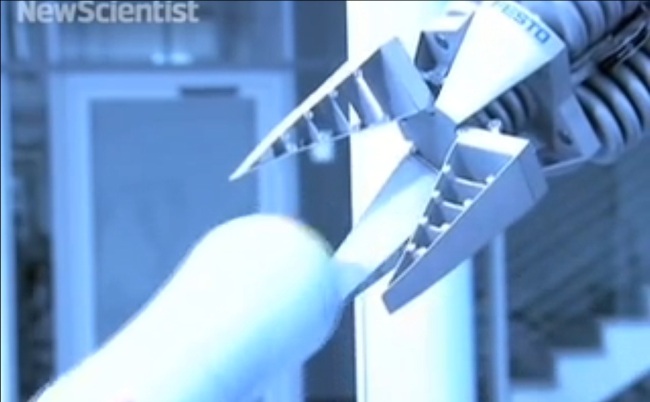Bionic Tentacle Features a Mix of Artificial Muscle, 3D Printing, and AI Tech

screencap from New Scientist video on Robotic Elephant Trunk / https://www.youtube.com/watch?v=2ZF35JUNaDg
Are we going to see the real Dr. Octopus soon? Well, it seems such a scenario won’t be that impossible. In Germany, engineers have developed a bionic tentacle capable of learning and remembering actions as well as situations. Yes, the Germans will probably be the ones giving life to the real Dr. Octopus who once appeared on TV with a thick German accent.
So what technology is behind this robotic tentacle? What purpose does it serve? Here are the things you would want to know about this piece of technology.
Elephant Trunk or Tentacles?
Developed by German engineering firm “Festo,” the bionic appendages are said to be designed to integrate the dexterousness of an elephant’s trunk to industrial robots. Unfortunately, it’s not bound to feed our Dr. Octopus fantasies—not for now, although the big possibility is there.
In the words of Paul Marks of New Scientist, the robot elephant trunk learns motor skills like a baby. His encounter with it was at Jochen Steil’s lab where he was interacting with a whiplashing tentacle that resisted his grasp and tried to push him away. “It feels strangely alive, as though I am trying to throttle a giant alien maggot,” Marks noted. Jochen Steil is an intelligent systems engineer at Bielefeld University in Germany. He is one of the developers of the robotic appendages at Festo.
The robot was actually already introduced to the public in 2010 as a proof of concept. It is a segmented appendages controlled by a pneumatic mechanism. Some would refer to it as a tentacle but the prototype shown to the public isn’t that long so likening it to an elephant’s trunk would probably be more appropriate. Nevertheless, it comes with tips comparable to what Dr. Octopus’ appendages bear.

screencap from New Scientist video on Robotic Elephant Trunk / https://www.youtube.com/watch?v=2ZF35JUNaDg
3D Printing Tech in Tow
Of note, 3D printing technology is involved in the production of the robotic appendages. Their segments were produced by a 3D printer. This is one of the products of modern technology that exemplify the benefits of 3D printing, the ability to create models or blueprints of custom parts necessary for a specific purpose and producing these parts quickly and in a versatile manner.
Artificial Muscles
It is also interesting to note that artificial muscle technology is involved here. Unfortunately, these artificial muscles are not similar to or derived from the recently reported artificial muscles made of polymer fiber said to offer the advantages of greater strength, lightness, and better durability. The appendages are still using pneumatics-based artificial muscles.
Perhaps it will be upgraded soon to incorporate better artificial muscle technology for a higher level of strength and flexibility. If the appendages were to be used to handle heavy objects or to perform tasks that require locomotion, working on reducing its weight while increasing strength and durability will be very important.

screencap from New Scientist video on Robotic Elephant Trunk / https://www.youtube.com/watch?v=2ZF35JUNaDg
Artificial Intelligence
Much has changed since the 2010 introduction of these bionic appendages to the public. Before, the appendages were only able to do very simple tasks seemingly aimed at only pleasing those observing them. They lacked precision. Controlling them was difficult. Training them couldn’t be done by those who know nothing about their design.
This year, however, Steil and a colleague, Matthias Rolf, have made changes to the robotic appendages. They announced at a human-robot interaction conference in Bielefeld that they have employed the process called “goal babbling” to make the robotic appendages emulate the way babies learn to grab things. Goal babbling can be explained as a trial and error process wherein muscles move until they are able to achieve what they are supposed to achieve.
Aside from goal babbling, the bionic appendages have also been upgraded to remember what happens to the positions of the components when undertaking a certain task. This memory will help the machine do better the next time it does a similar task.
Applications
These robotic appendages from Festo are believed to solve the long-time difficulty of automating tasks like apple picking and bulb replacement. These tasks generally couldn’t be automated because of the randomness factor and the need for dynamic reactions to do things that are appropriate for the situations. An adaptively learning machine like these appendages will offer a big push to finally automating repetitive tasks that are still being performed by humans.

screencap from New Scientist video on Robotic Elephant Trunk / https://www.youtube.com/watch?v=2ZF35JUNaDg
Ironman vs Dr. Octopus?
The robotic appendages had their chance to “shake hands” with German chancellor Angela Merkel. In another continent, US President Barack Obama jokingly(?) announced an “Iron Man” development. Could these be the earlier stages of global superpowers finally venturing in superhero development? Hopefully not — not in the sense that technologically advanced countries are undertaking efforts to use robotics for warfare. Technology is always more useful in industrial and consumer tech applications, not in warfare.
As robotics technology advances, things are bound to become more exciting. Robots will eventually be taking over all repetitive tasks humans should not be degradingly doing. Humans have better things to do than to deal with tasks a bionic tentacle or some other robot can more efficiently handle.